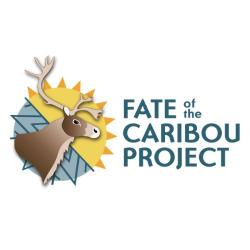Terrapin One gives African rhino poachers reason to Fear the Turtle
COLLEGE PARK, Md - Guided by computer modeling developed by a University of Maryland visiting professor, the first unmanned aerial vehicle flight of its kind has successfully protected an adult rhinoceros and its calf in a South African rhino poaching hot spot.
In response to a deadly epidemic of rhino killings, which are being slaughtered for the ivory in the horns, Dr. Tom Snitch of the University of Maryland Institute for Advanced Computer Studies (UMIACS) has organized an all-volunteer expedition to conduct experimental anti-poaching surveillance near South Africa's Krueger National Park. The team is currently testing portable unmanned aerial vehicles, or drones, equipped with infrared cameras and guided by a computer program that predicts the movements of rhinos and poachers.
This combined technology is a new weapon in the war on wildlife poachers. UMIACS faculty members have used the same programming techniques to detect explosives caches used by insurgents in Iraq, and are working on other non-military applications of UAV flights, including wilderness rescue missions and surveillance of fast-moving crop diseases.
On May 26 the team conducted the first night flight of a UAV dubbed "Terrapin One" in the Balule Game Reserve. Dr. Snitch reports from the field:
"Last night, we flew the Falcon UAV, named Terrapin One, on a 70 minute night antipoaching mission over the Olifant West section of the Balule Game Reserve near Krueger National Park. Based on our analytical model, we were able to locate a rhino and its calf a few minutes into the flight. We then flew a grid pattern around the animals looking for potential poachers. The rhinos were abut 100 meters from the external fence line and shortly after identifying the rhinos, we noticed a car stopping at the fence line. The authorities were immediately alerted and dispatched to the vehicle. We do not yet know who was in the vehicle but there was no reason to stop so close to the rhinos.
"We contined to fly a box pattern extending 10 kilometers from our base camp for the next hour. We landed the UAV by parachute which literally dropped the Terrapin 15 meters from the base vehicle. The entire flight was recorded in HD and I will make it available when we have a better bandwidth.
"The flight paths which we created with our analytical model took us precisely to where the mathematics suggests that a rhino was most likely to be and we were able to easily spot the animals from 200 meters in the air. We were also able to close in on a suspect vehicle and begin a rapid response activity. The Falcon performed flawlessly and we will be flying this afternoon to inspect the fence lines near where the rhinos were spotted. We will revisit that area with another flight this evening.
"We believe this is the first time that a UAV has been flown at night, with an infrared camera, where rhinos were identified from the air and a possible - and it is only a possible - poaching event was successfully deterred.
"As we say at the University of Maryland - Fear the Turtle. The flying Terrapin One did its job last night on a very cold night in South Africa."
A reporter for The Telegraph of London was on the scene. Read her account of Terrapin One's maiden flight and the ongoing shooting war that pits rhino poachers against conservationists, private game wardens and the South African government.
Dr. Snitch's April 11 on-campus talk about the rhino poaching crisis and his plans for mission that is now underway.
We will add updates from the field in South Africa as they become available.
-CMNS/UMDCP-
Media contact: Heather Dewar 301-405-9267
Photo credit: Tom Snitch







